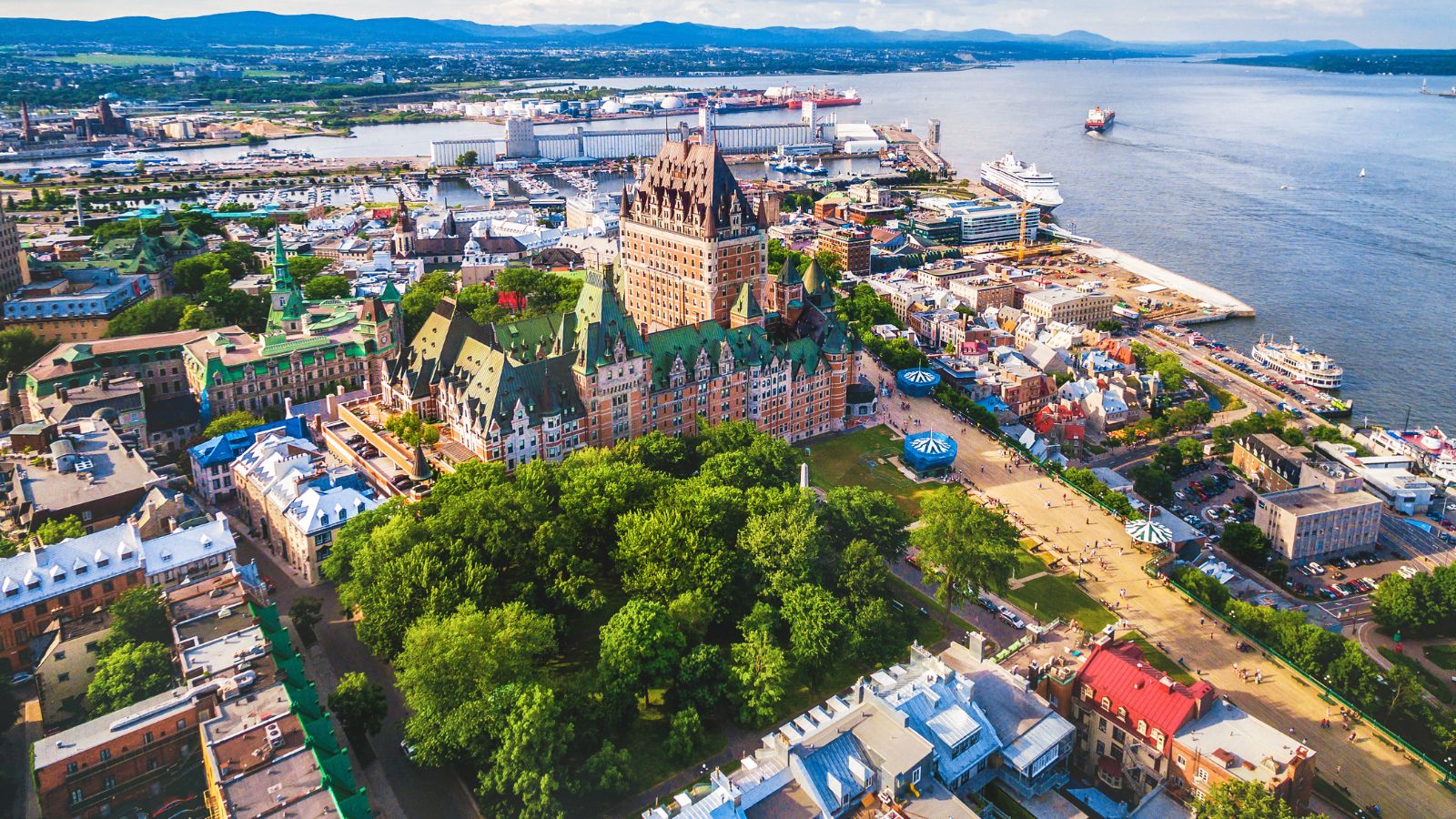The idea of the American Dream has long symbolized opportunity, prosperity, and success through hard work. However, over the past decade, many have shifted their hopes northward. Canada now offers what millions see as a more attainable and balanced version of that dream. With universal healthcare, more affordable living, and inclusive immigration policies, Canada attracts skilled workers, students, and families from around the world. Its strong social safety nets, better quality of life, and political stability reshape global aspirations. Here are 18 reasons the Canadian Dream replaces the American Dream.
Greater Affordability and Lower Cost of Living

Canada offers a more manageable cost of living compared to many parts of the United States, especially in housing and healthcare. While cities like Toronto and Vancouver are expensive, many Canadian cities, such as Halifax, Winnipeg, and Edmonton, provide more affordable options for homeownership and rent. Public services such as education and transit are also well subsidized. In contrast, the rising costs in many U.S. metro areas have made daily life less affordable. Canada’s relatively stable prices and financial predictability make it easier for newcomers and families to build a secure and comfortable future.
Universal Public Healthcare

One of Canada’s most substantial advantages is its universal public healthcare system, which provides essential medical services to all permanent residents and citizens without direct out-of-pocket costs. This system alleviates the financial burden on families and ensures that individuals receive timely care, regardless of their income or employment status. In contrast, the U.S. healthcare system is expensive, often tied to private insurance, and inaccessible to many. For those seeking long-term security and peace of mind, Canada’s healthcare system represents a major reason why more people are choosing to pursue their goals north of the border.
Higher Social Mobility

Canada ranks consistently higher than the United States in measures of social mobility. This means individuals born into lower-income households have a better chance of improving their economic status through education, employment, and social programs. Government support systems, affordable post-secondary education, and income-based benefits help level the playing field. In contrast, economic inequality in the U.S. often makes upward mobility more difficult. For immigrants and young professionals, Canada offers a more straightforward path to progress based on merit and opportunity. Its social structure makes it easier to build a better life over time, regardless of background.
Easier Path From Study to Permanent Residency

Canada offers a well-defined and transparent pathway from international education to permanent residency, making it highly attractive to international students. Programs such as the Post-Graduation Work Permit and Express Entry enable graduates to gain work experience and apply for permanent status within a few years. In comparison, U.S. immigration pathways for students are more complex, competitive, and uncertain. Canada’s education-to-immigration pipeline encourages talent retention and offers stability to those who invest in a Canadian degree. This approach not only supports long-term integration but also signals to students that they are valued as future contributors to the organization.
Welcoming Immigration Policies

Canada is known for its structured, transparent, and inclusive immigration system. Programs like Express Entry, Provincial Nominee Programs, and family sponsorships are designed to attract skilled workers, students, and reunite families. The government regularly announces immigration targets and invites hundreds of thousands of newcomers each year. Compared to the United States, where visa caps, backlogs, and changing rules create uncertainty, Canada offers greater clarity and consistency. Its focus on integration and long-term settlement makes it more appealing to global talent. For individuals seeking a stable and welcoming environment, Canada stands out as a top destination.
Higher Quality of Life and Happiness Rankings

Canada consistently ranks among the top countries in terms of overall quality of life and happiness. Factors such as personal safety, clean air, robust public services, and inclusive communities all contribute to overall well-being. Reports from the United Nations and OECD often place Canada ahead of the U.S. in terms of life satisfaction, healthcare access, and environmental quality. Cities across the country offer a high standard of living without the extreme inequalities found elsewhere. This balanced approach to prosperity and social welfare creates a sense of security and belonging, making Canada a preferred choice for those seeking a fulfilling and stable life.
Better Work-Life Balance

Canada offers a healthier approach to work-life balance, with labor laws that protect workers’ rights to paid time off, parental leave, and reasonable working hours. Most full-time employees receive at least two weeks of paid vacation and generous sick leave, with extended parental benefits supported through Employment Insurance. Compared to the U.S., where many workers have minimal paid leave and longer working hours, Canada promotes a lifestyle that prioritizes time with family, rest, and personal well-being. This cultural and structural difference supports both physical and mental health, making it easier to maintain a balanced and sustainable life.
Less Economic Inequality

Canada experiences less income disparity than the United States, partly due to its progressive tax system, accessible education, and social programs that help narrow the gap. While inequality persists, Canada’s policies aim to reduce poverty and ensure that basic needs are met. In contrast, the U.S. faces a wider income gap and a larger percentage of the population living without access to essentials. Canada’s approach fosters more equitable outcomes, particularly for newcomers, families, and lower-income workers. This commitment to fairness and stability contributes to a stronger sense of opportunity and social cohesion.
Stronger Social Safety Net

Canada’s social safety net provides meaningful protection during periods of unemployment, illness, or life transitions. Programs such as Employment Insurance, the Canada Child Benefit, public pensions, and income-tested supports help individuals and families maintain financial stability. Universal access to healthcare further reduces the risk of financial hardship. These services are designed to promote social inclusion and economic resilience. In comparison, the U.S. system is more fragmented and often tied to employment status, leaving many without support in difficult times. Canada’s public systems provide greater reassurance, especially for those starting over or raising families in a new country.
Better Maternal and Child Health Outcomes

Canada outperforms the United States in key maternal and child health indicators, including lower maternal mortality, fewer infant deaths, and higher immunization rates. Universal healthcare ensures that pregnant women and children receive regular, preventive, and emergency care without financial barriers. Parental leave policies also allow mothers and fathers to bond with newborns while maintaining job security. In contrast, many American families face high out-of-pocket medical costs and limited paid leave. Canada’s focus on accessible healthcare and early childhood support leads to better outcomes for families and a stronger foundation for the next generation.
Longer Life Expectancy

Canadians enjoy a higher life expectancy than Americans, thanks to better access to healthcare, healthier lifestyles, and stronger public health systems. The average life expectancy in Canada consistently exceeds that of the U.S., with fewer preventable deaths linked to chronic disease, violence, or lack of care. Clean air, safer communities, and publicly funded health services all contribute to this advantage. Preventive medicine and universal coverage mean health issues are detected and treated earlier. For those prioritizing long-term well-being, Canada’s population health statistics reflect the benefits of a system designed around care, equity, and public health investment.
Lower Incarceration Rates

Canada maintains significantly lower incarceration rates compared to the United States. The American justice system has one of the highest imprisonment rates globally, often driven by mandatory sentencing, racial disparities, and limited rehabilitation programs. In contrast, Canada focuses more on rehabilitation, diversion programs, and community-based sentencing. The result is a criminal justice system that prioritizes reintegration over long-term punishment. Lower incarceration also means fewer families are disrupted and fewer taxpayer resources are spent on prisons. This approach reflects broader social priorities that support second chances, fairness, and public safety through prevention and support rather than over-incarceration.
More Freedom of the Press and Economic Freedom

Canada consistently ranks higher than the United States in global indices measuring press freedom and economic freedom. Journalists in Canada operate with stronger protections and less political interference, creating a more transparent media environment. On the economic front, Canada’s regulatory systems support open markets, business growth, and property rights while maintaining social protections. These rankings reflect a balance between opportunity and accountability. While the U.S. continues to lead in innovation, increasing political polarization and media distrust have eroded public confidence. Canada’s steadier environment promotes trust, informed decision-making, and stable economic participation.
Bilingual Multicultural Identity

Canada officially recognizes both English and French as national languages and embraces a multicultural identity that encourages integration without assimilation. Cities like Montreal, Ottawa, and Vancouver exemplify this inclusive character, where people of diverse cultures, faiths, and languages coexist harmoniously. Government policies actively promote cultural preservation while offering equal access to services in multiple languages. This bilingual and multicultural model creates a sense of belonging for immigrants and minorities. In contrast, cultural divisions in the U.S. can often result in exclusion or conflict. Canada’s model supports unity through respect and shared opportunity.
Inclusive Societal Values

Canada is widely recognized for its progressive and inclusive social values. Policies on gender equality, LGBTQ+ rights, religious freedom, and anti-discrimination are built into its legal and social systems. The country supports initiatives to improve reconciliation with Indigenous communities and actively works toward equity in education, employment, and healthcare. These values are reinforced through legislation, public institutions, and education. While challenges remain, Canada’s commitment to fairness and respect creates a welcoming environment for diverse populations. For many around the world, this inclusive approach represents a key reason the Canadian Dream feels more achievable and humane.
Clean Energy and Climate-Forward Policies

Canada is investing heavily in clean energy and climate resilience, positioning itself as a leader in environmental sustainability. With abundant hydroelectric power and firm commitments to reducing emissions, the country is transitioning away from fossil fuels while supporting green innovation. National programs promote the development of electric vehicles, public transportation, and renewable energy infrastructure. Compared to the U.S., where environmental policy shifts frequently with political changes, Canada maintains more consistent climate goals. This stable and science-based approach makes Canada an attractive destination for those who prioritize environmental responsibility, future-focused industries, and long-term energy security.
Regional Economic Opportunities

Canada offers economic opportunities across multiple regions, not just in a few dominant cities. While Toronto, Vancouver, and Montreal remain major centres, smaller cities like Halifax, Saskatoon, and Kelowna are experiencing growth in sectors such as technology, healthcare, education, and clean energy. Government policies support regional development through immigration streams, innovation hubs, and infrastructure investments. This distributed economic model creates more accessible job markets and balanced growth. In contrast, the U.S. often sees opportunity concentrated in fewer urban areas. Canada’s inclusive growth strategy ensures that more people, regardless of location, can participate in building a better future.
A Safe Haven During Political Turmoil

Canada is viewed globally as a politically stable and socially safe country, especially during periods of unrest elsewhere. Its democratic institutions, independent judiciary, and peaceful civic environment make it a trusted destination for those seeking security and continuity. While political divisions and social tensions have intensified in the U.S., Canada has maintained a reputation for civility, order, and the rule of law. Immigrants, refugees, and global professionals often choose Canada for its calm, structured environment where policies are predictable and communities are welcoming. This stability reinforces Canada’s appeal as a long-term haven for individuals and families alike.
21 Products Canadians Should Stockpile Before Tariffs Hit

If trade tensions escalate between Canada and the U.S., everyday essentials can suddenly disappear or skyrocket in price. Products like pantry basics and tech must-haves that depend on are deeply tied to cross-border supply chains and are likely to face various kinds of disruptions
21 Products Canadians Should Stockpile Before Tariffs Hit
